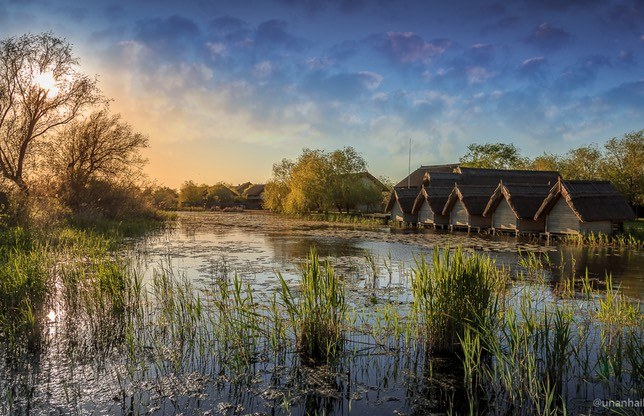The Danube Delta, named by Napoleon “the king of European rivers”, with a length of 2860 km, is the second largest river in Europe, after Volga. The river springs from the Black Forest Mountains (Germany) and it crosses 10 countries before joining the Black Sea. For Romanians, the Danube forms the border with Serbia, Bulgaria, Moldavia and Ukraine and it is closely related to the history of the country.
The Danube joins the Black Sea through three distributaries (Chilia, Sulina and Sfantu Gheorghe), forming the youngest delta in Europe. The Danube Delta is the second largest one in Europe and one of the largest wetlands in the world, as a habitat of water fowl.
The flora is very rich, occupying approximately 78% of the total surface and it is represented mostly by wetland vegetation (reed, bulrush, sedge, mixed with dwarf willow). The fauna is rich and varied, including various species of mammals, birds, insects, fish, reptiles, amphibians, invertebrates, some of which are protected.
The Danube Delta is renowned for its ornithological fauna, the richest in the world (over 250 species). Very rare or endangered birds, such as Dalmatian pelicans, red-breasted geese or the great egret have found their refuge here. There is a wide variety of fish, pike and Wels catfish dominating the waters. Among mammals, we mention wild boar, river otter, European mink, small weasel and many others.
Passionate fishermen will find a real fishing heaven here, but amateurs will not be left aside either; they can enjoy delicious tripe soup, made with traditional recipes of the locals.
The last wild beach in the Delta, Sf. Gheorghe, with the finest sand on the entire Black Sea coast, gives a fascinating view of the spot where the Danube joins the Black Sea.
Among the many attractions we mention the Letea and Caraorman woods. Letea forest has been a natural reserve since 1938 and it stands out with its aspect of a subtropical forest thanks to its rich climbing plants specific to Mediterranean climate. This is where you can see the oldest oak tree. With an age estimated at 500 years and a circumference of 4 meters, the oak tree is also called the Kneeling Oak, because its branches first touch the land and then rise again.
Ambient team is waiting for you!

